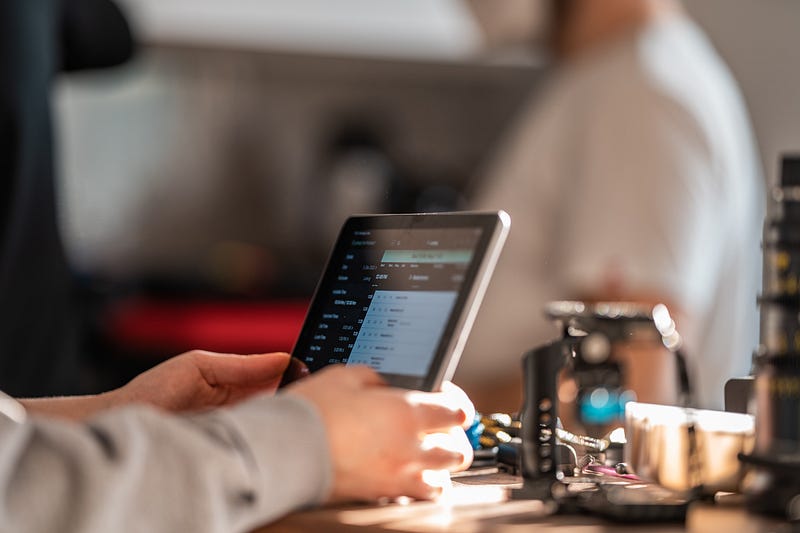# Rethinking Multitasking on the iPad Pro: A Personal Perspective
Written on
Chapter 1: Introduction to Multitasking on iPad Pro
The multitasking capabilities of the iPad Pro, particularly the Stage Manager feature, have sparked considerable debate among users. Some individuals are enthusiastic about its potential, while others express dissatisfaction. I find myself somewhere in the middle. Introduced with iPadOS 16, Stage Manager is available on all iPad Pro models from 2018 onwards and the M1 iPad Air. With the recent update in iPadOS 17, Stage Manager has become more customizable in how windows are arranged. However, an important question persists:
Does Stage Manager enhance multitasking, or does it complicate the iPad's inherent strengths?
Chapter 2: Exploring Multitasking Options
Apple provides three distinct multitasking methods on the iPad Pro since the advent of iPadOS 16:
- Split View: This traditional approach allows users to work with two apps side by side, adjustable in proportions of 1:2, 1:1, or 2:1.
- Slide Over: This feature enables apps to float over the primary workspace, allowing for quick access while keeping the main screen uncluttered.
- Stage Manager: This feature organizes apps into stages, accommodating up to four apps per stage and allowing for a total of 16 apps to be active simultaneously. For M-series iPads, Stage Manager is the exclusive multitasking option when connected to external displays.
Chapter 3: Benefits of Split View and Slide Over
The merits of Split View and Slide Over can be summarized in two key areas: screen organization and enhanced concentration. Limiting the workspace to two apps encourages a focused approach, which aids in breaking down larger projects into manageable tasks. Slide Over serves as an efficient solution for apps that are used sporadically, allowing them to be hidden off-screen when not needed, thus minimizing visual distractions.
Chapter 4: Evaluating Stage Manager
Does this praise for Split View and Slide Over imply that Stage Manager is ineffective? Not necessarily. Stage Manager can be beneficial for those who primarily utilize the iPad for diverse tasks and require access to multiple applications. It allows users to group apps by task, making it easier to switch between different responsibilities. Initially, I was excited about Stage Manager's potential to transform my workflow.
However, I have come to believe that Stage Manager may detract from the iPad's reputation as a tool for focused work. Here’s why:
- Visual Clutter: The complexity of having multiple stages and an ever-present sidebar can become distracting, as it diverts attention from the primary task. Although these elements can be hidden, doing so adds friction to app switching.
- Overabundance of Apps: The ease of switching between apps can lead to distractions, whereas the higher barrier to access apps in Split View and Slide Over can help maintain focus.
- Window Size Constraints: When utilizing multiple apps in a single stage, the display area for each app is significantly reduced compared to Split View.
Chapter 5: Where Stage Manager Excels
I find Stage Manager particularly useful when my iPad is connected to an external monitor. In this context, it functions well as a desktop replacement for more complex tasks that do not demand constant focus. The feature enhances applications designed for mouse and keyboard input, making the iPad more versatile in a desktop setup.
Chapter 6: Personal Workflow Preferences
The iPad has always been a device for focused work, which I appreciate. The structure of Split View and Slide Over encourages me to concentrate on the essential applications for specific tasks. For instance, I primarily use my iPad for blogging, relying on four key apps: Ulysses, DeepL, Grammarly, and Spotify. Typically, I run Ulysses and Spotify in a 2:1 Split View, while the others float in Slide Over. A simple shortcut allows me to launch everything I need at once, quickly immersing me in my writing.
When I do connect my iPad Pro to an external monitor, I value the enhancements brought by Stage Manager, which offers greater flexibility in window organization.
Chapter 7: Conclusion
This reflection encapsulates my thoughts on Stage Manager and multitasking on the iPad. It's crucial to recognize that productivity methods are highly personal; what works for one person may not suit another. In my case, I find that Stage Manager does not align with my everyday multitasking needs, though it proves beneficial when using an external monitor. Ultimately, while it may compromise the iPad’s potential for focused work, it also adds a layer of adaptability that can enhance its functionality in a desktop environment.
What are your thoughts on Stage Manager? Do you find it useful, or do you prefer the traditional multitasking methods? I welcome your insights in the comments!
Thank you for taking the time to read this!
Tobias
